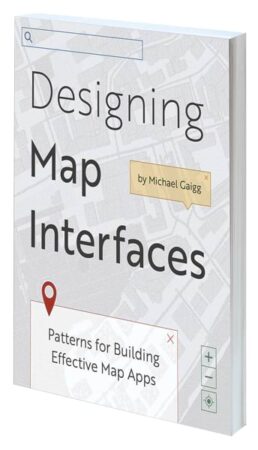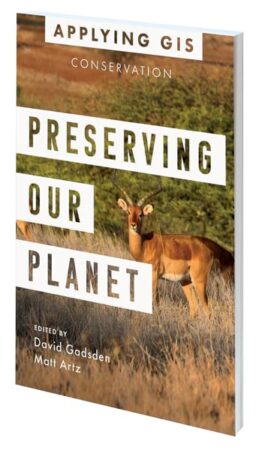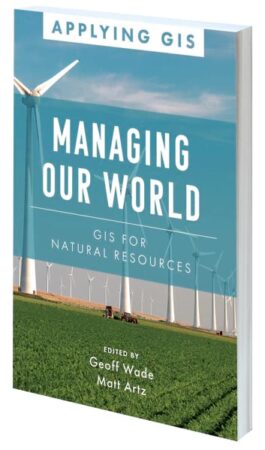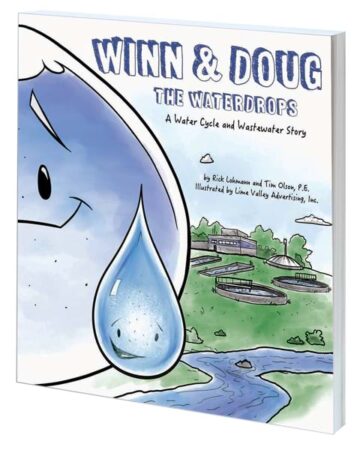Designing Map Interfaces: Patterns for Building Effective Map Apps
By Michael Gaigg

Designing Map Interfaces: Patterns for Building Effective Map Apps is the essential guide to creating geospatial app interfaces that are usable, efficient, and stunning. Whether configuring an out-of-the-box solution, building an app with an app builder, or working on a custom app project, readers can employ the book’s practical tips to assemble a meaningful user interface (UI). Intended for GIS professionals, solution engineers, developers, and designers, Designing Map Interfaces identifies several recurring problems in UI design and outlines specific UI patterns to employ to fix them.
- December 2022/March 2023, 173 pp.
- Ebook ISBN: 9781589487260
- Paperback ISBN: 9781589487253
Preserving Our Planet: GIS for Conservation
Edited by David Gadsden and Matt Artz

By employing maps and apps, conservation professionals can more easily observe what’s happening on the ground, analyze and organize their data, and collaborate with other organizations and members of the public to harness opportunities and address threats. Preserving Our Planet: GIS for Conservation showcases how several conservation organizations have successfully used GIS to help preserve biodiversity. The book provides ideas, strategies, and tools to help readers jump-start their own uses of GIS for conservation. It also comes with a collection of online resources, including stories, videos, and downloadable content.
- September 2022/January 2023, 130 pp.
- Ebook ISBN: 9781589487222
- Paperback ISBN: 9781589487215
Managing Our World: GIS for Natural Resources
Edited by Geoff Wade and Matt Artz

In Managing Our World: GIS for Natural Resources, readers can explore how applying a geographic approach to managing natural resources boosts efficiency and advances sustainability. The book spotlights real organizations in the agriculture, forestry, mining, energy, pipeline, and renewable energy sectors that are successfully using GIS to streamline workflows, gain competitive insight, improve their sustainability efforts, and more. It shows how these organizations are equitably balancing current demands for earth’s natural resources with preserving those resources for future generations. Examples in the book demonstrate how to increase profitability, improve environmental protections, and expand societal benefits while improving organizational efficiency.
- January/April 2023, 184 pp.
- Ebook ISBN: 9781589486898
- Paperback ISBN: 9781589486881
Winn and Doug the Waterdrops: A Water Cycle and Wastewater Story
By Tim Olson and Rick Lohmann

Written for children in grades 1–5, Winn and Doug the Waterdrops: A Water Cycle and Wastewater Story shows kids where water comes from and what happens once it gets used. Part of a career-themed science, technology, engineering, arts, and mathematics (STEAM) picture book series, the book invites young readers to explore the different phases of Winn the Raindrop’s life through the water cycle, from vapor to runoff, before following Doug the Waterdrop to see how water gets cleaned after it is used. Perfect for encouraging critical and creative thinking and spatial analysis skills, Winn and Doug the Waterdrops highlights the incredibly important jobs that water resource engineers and wastewater operators have and how they make the world a better place. In-book activities and a glossary are included.
- April 2023, 56 pp.
- Ebook ISBN: 9781589487208
- Paperback ISBN: 9781589487192

